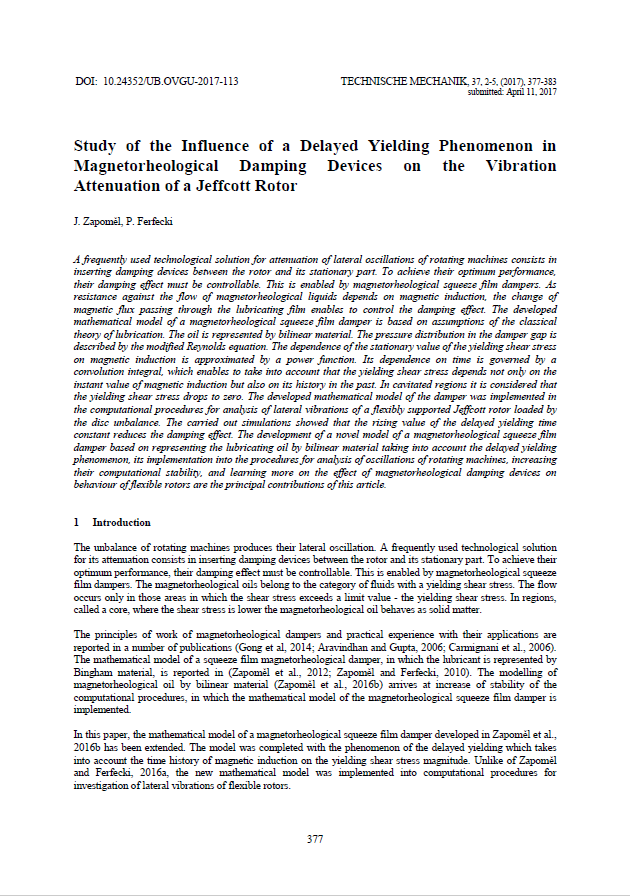Study of the Influence of a Delayed Yielding Phenomenon in Magnetorheological Damping Devices on the Vibration Attenuation of a Jeffcott Rotor
DOI:
https://doi.org/10.24352/UB.OVGU-2017-113Abstract
A frequently used technological solution for attenuation of lateral oscillations of rotating machines consists in inserting damping devices between the rotor and its stationary part. To achieve their optimum performance, their damping effect must be controllable. This is enabled by magnetorheological squeeze film dampers. As resistance against the flow of magnetorheological liquids depends on magnetic induction, the change of magnetic flux passing through the lubricating film enables to control the damping effect. The developed mathematical model of a magnetorheological squeeze film damper is based on assumptions of the classical theory of lubrication. The oil is represented by bilinear material. The pressure distribution in the damper gap is described by the modified Reynolds equation. The dependence of the stationary value of the yielding shear stress on magnetic induction is approximated by a power function. Its dependence on time is governed by a convolution integral, which enables to take into account that the yielding shear stress depends not only on the instant value of magnetic induction but also on its history in the past. In cavitated regions it is considered that the yielding shear stress drops to zero. The developed mathematical model of the damper was implemented in the computational procedures for analysis of lateral vibrations of a flexibly supported Jeffcott rotor loaded by the disc unbalance. The carried out simulations showed that the rising value of the delayed yielding time constant reduces the damping effect. The development of a novel model of a magnetorheological squeeze film damper based on representing the lubricating oil by bilinear material taking into account the delayed yielding phenomenon, its implementation into the procedures for analysis of oscillations of rotating machines, increasing their computational stability, and learning more on the effect of magnetorheological damping devices on behaviour of flexible rotors are the principal contributions of this article.





